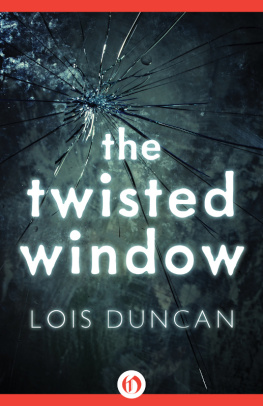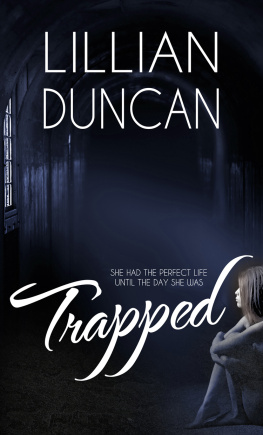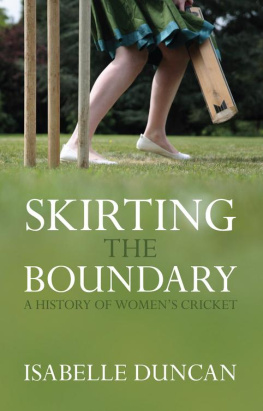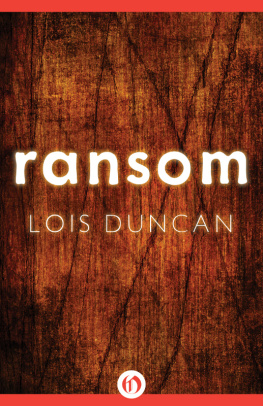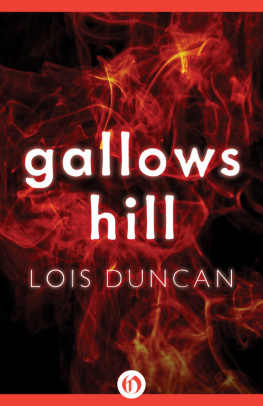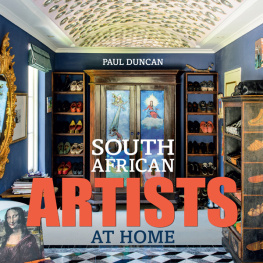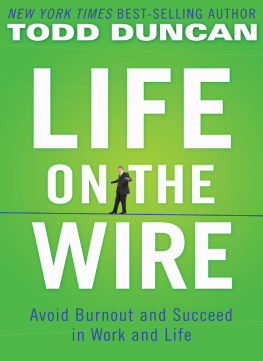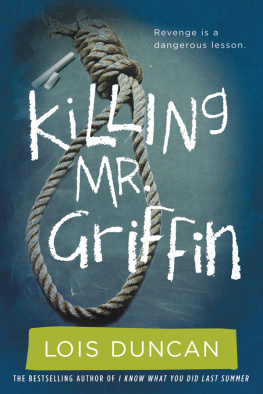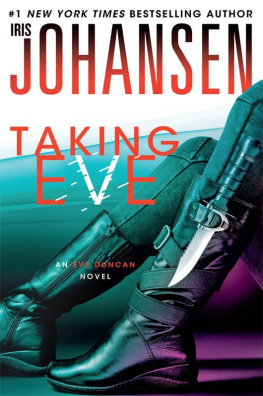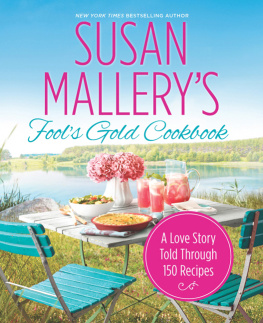All rights reserved. No part of this book may be reproduced or transmitted by any person or entity, including internet search engines or retailers, in any form or by any means, electronic or mechanical, including printing, photocopying (except under the statutory exceptions provisions of the Australian Copyright Act 1968), recording, scanning or by any information storage and retrieval system without the prior written permission of Random House Australia. Any unauthorised distribution or use of this text may be a direct infringement of the author's and publisher's rights and those responsible may be liable in law accordingly.
Salvation Creek: an unexpected life.
ePub ISBN 9781864715163
Kindle ISBN 978186471 7808
Note: Some of the names of people in this book have beenchanged to protect their privacy.
Original Print Edition
SALVATION CREEK
A BANTAM BOOK
First published in Australia and New Zealand in 2006 by Bantam
This edition published in Australia and New Zealand in 2007 by Bantam
Copyright Susan Duncan, 2006
This electronic book is sold subject to the condition that it shall not by way of trade or otherwise, be lent, resold, hired out, or otherwise circulated without the publisher's prior consent in any form other than that in which it is published and without a similar condition including this condition being imposed on the subsequent purchaser
Duncan, Susan (Susan Elizabeth).
Salvation Creek: an unexpected life.
ISBN: 9781863254748
1. Duncan, Susan (Susan Elizabeth). I. Title.
920.72
Transworld Publishers
a division of Random House Australia Pty Ltd
Level 3, 100 Pacific HighwayNorth Sydney, NSW 2060
www.randomhouse.com.au
Cover painting Church Point by John Lovett
Chapter openers feature linocuts by Katie Clemson, from the series
Pittwater Boatsheds, 2003.
Cover and text design by Nanette Backhouse/Saso Content and Design
Typeset by Midland Typesetters, Australia
Printed and bound by Griffin Press, South Australia
For my brother, John
PROLOGUE
THERE IS A HOUSE on a high, rough hill that overlooks the tawnygreen waters of Lovett Bay. It is pale yellow, with three chimneysand a red tiled roof splattered with lichen. An elegant verandah,with stately columns and polished wooden floors, stretches fromend to end and on a still, summer evening it is quite magical todine there, watching the light fade and birds fly home.
The house is reached by a winding stairway that begins at theshore and seems to meander on and on to nowhere. Sometimes,if it is early enough in the morning, or late enough in the afternoon,swamp wallabies pause on the pathway and stare with big,uncertain eyes before suddenly taking fright and thumping offinto the bush. In summer, the path is flecked with mint colouredmoss, the same shade of green as the blotches on the smoothtrunks of the spotted gums that form a towering canopy in frontof the sky. It is a mysterious pathway that seems to lead perhapsto the heavens themselves. The climb is steep and yet if you takeit slowly and pause to look at Lovett Bay, there is no need to feeltired or breathless.
Many boats are moored in the bay, some big and immaculatelymaintained, with tall masts that seagulls or cormorants cling to,scanning the waters for their next feed. Others are the dreams,perhaps broken, of people who have seen beauty in an old wreckand who plan, one day, to restore it to former glory. Many of thesewrecks have sat for years and I have never seen anyone go nearthem. Sometimes, the Water Police do a tour of the bay in one oftheir orange and white motorboats and from time to time, one ortwo of the rottenest vessels are towed somewhere else or taken outto sea and sunk.
It is more than six years now since I first started trekking upthese steps and when I reach the fork in the pathway near the top,I still can't decide which way is preferable. The right fork is steepand leads to a vast, spongy lawn which is a stark contrast to themuted, scraggy bush. It isolates the house, like an emerald lake,from the spotted gums that soar like straight-backed, silent sentries.
There are a few brooding ironbarks too, that are sometimestwisted, like wounded warhorses. The other pathway is a gentleascent but it veers slightly away from the house. The temptation isto go for the direct route even if it makes calf muscles ache andthe blood rush to your head. But the better choice, I think, is themilder access even though it appears to lead to an old, woodenworkshed that lacks even a hint of the grandeur of the main house.
The house is called Tarrangaua which is an Aboriginal wordmeaning, I am told, high, rough hill. But I cannot find the word inany Aboriginal dictionary. The woman who named the house wasa famous Australian poet, Dorothea Mackellar. She died in 1968 soI cannot ask her how the name came about. Perhaps she sat aroundthe dinner table with a group of guests one night in the beautifullyproportioned main sitting room and they played a game to inventthe best title. The name is certainly grand, and so was she.
She would arrive at Church Point in a chauffeur driven yellowRolls Royce where her caretaker would wait for her with thelaunch. Lovett Bay, you see, is accessible only by boat unless youwant to walk five kilometres along the escarpment then down intothe valleys of the Ku-ring-gai Chase National Park. It is a sensationalwalk that takes about an hour and a half but it is tough inparts, with steep rocky tracks where you can easily lose yourfooting. In contrast, the boat trip is five minutes of pure pleasureas you cut past McCarrs Creek, then Elvina Bay and finally swingwest into Lovett, with the wind blowing in your face and the snapof salt air in your lungs.
At the time the house was built for Dorothea Mackellar in1925, she was wealthy, single, forty years old and already involvedin a love affair with the brandy bottle. But I knew nothing of allthis when I first made my way past the house and into Lovett Bay.
I was a messy, jangly forty-eight year old struggling to find a placeto belong. I'd watched two of the most important people in my lifeslide slowly and painfully into death and the horror of it snatchedaway lightheartedness, stubbed out hope. Blotted out my idea ofwhere I fitted in. I'd been spinning in a career for more years thanI cared to remember, where the days had become a blur of officepolitics and office pressures, where I felt only a rising sense ofdetachment from one week to the next. I had no idea what I waslooking for to give my life new purpose, only that when I foundthis intangible, wraithlike something, I would be able to still therestlessness. Begin again.
As I bumped across the water in a leaky tin dinghy to see aproperty for sale in Lovett Bay, I did not know that the journeyhad begun. That Tarrangaua, the pale yellow house with thecorridor of columns and the long verandah on the high, rough hill,would hold the key to it all.
1
ONE MORNING, FOR NO reason at all, I cannot find the strength toget out of bed. It's mid-winter in Melbourne. Trees are nakedunder a dirty brown sky. A few dead leaves skitter joylessly in anirritable wind. The alarm clock went off an hour ago. The doghasn't been walked. I haven't showered, dressed or left for theoffice. The thought of throwing back the covers and putting myfeet on the floor fills me with terror. I lie there, squeezing my eyesshut. Descending slowly into a deep, dark hole that I welcome. Iwant oblivion so badly I can think of nothing else.
When I look at the clock again, two hours have evaporated.I reach for the phone and call the doctor.
'I can't make the decision to get out of bed.'
'Stay there, then. Stay there for as long as you want. You're ill.'


